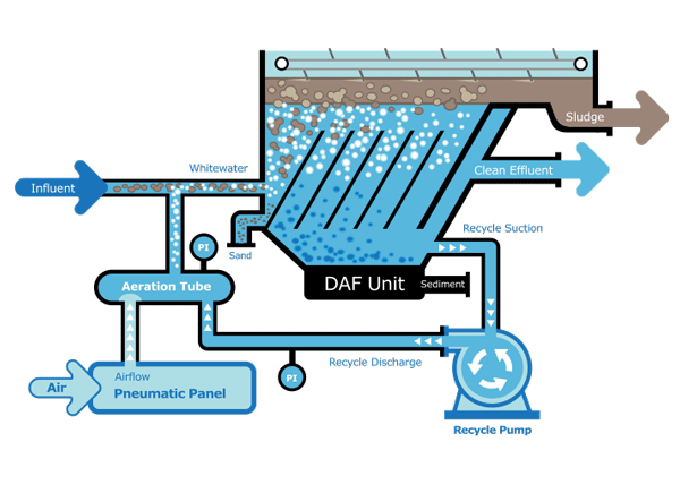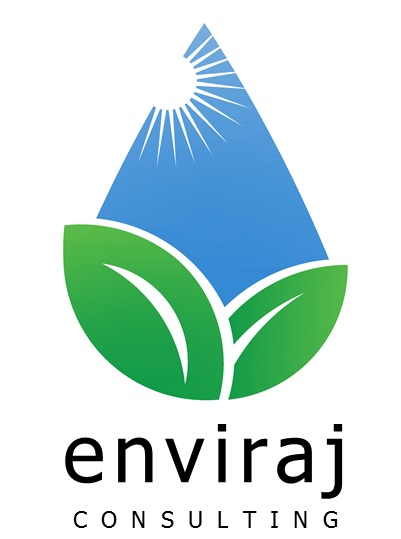Enviraj Consulting
Dissolved Air flotation
| Dissolved air flotation | |
|---|---|
| Overview | Dissolved air flotation (DAF) is a water treatment process that clarifies wastewater by removing suspended solids. The removal is achieved by dissolving air in the water or wastewater under pressure and then releasing the air at atmospheric pressure in a flotation tank basin. The released air forms tiny bubbles which adhere to the suspended matter causing the suspended matter to float to the surface of the water where it may then be removed by a skimming device. |
 |
|
| How Does it Works |
Wastewater is fed into a DAF system and hit with a stream of “whitewater”, which is recirculated clarified water from the DAF that’s super saturated with dissolved air. As these two mixtures blend together, microscopic bubbles attach to solid particulates, giving them enough buoyancy to surface in the DAF tank. As solids accumulate in a floating layer on the top of the DAF tank, a skimmer gently nudges the sludge toward a discharge hopper. Any solids that don’t float will sink to the “V” bottom of the DAF tank. Settled solids are concentrated and discharged by an automatically controlled pneumatic drain valve. The clarified water flows out via an under-over weir on either side of the DAF unit. Some of this water is used in the recirculation loop while the rest flows out of the vessel. |
| Pollutants Removed | TSS, BOD, COD |
| Area of Application | Industrial & Municipal |
| Environmental Footprint | Morderate |
| Area Footprint | Morderate |
| Treatment cost per Cubic Meter | Unknown |
| Capital Cost | Unknown |
| O&M Cost | Low |
| Data Sources: | https://www.jwce.com/knowledge-center/what-is-a-daf |
